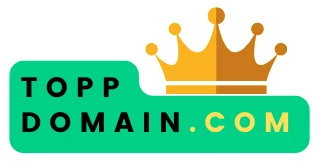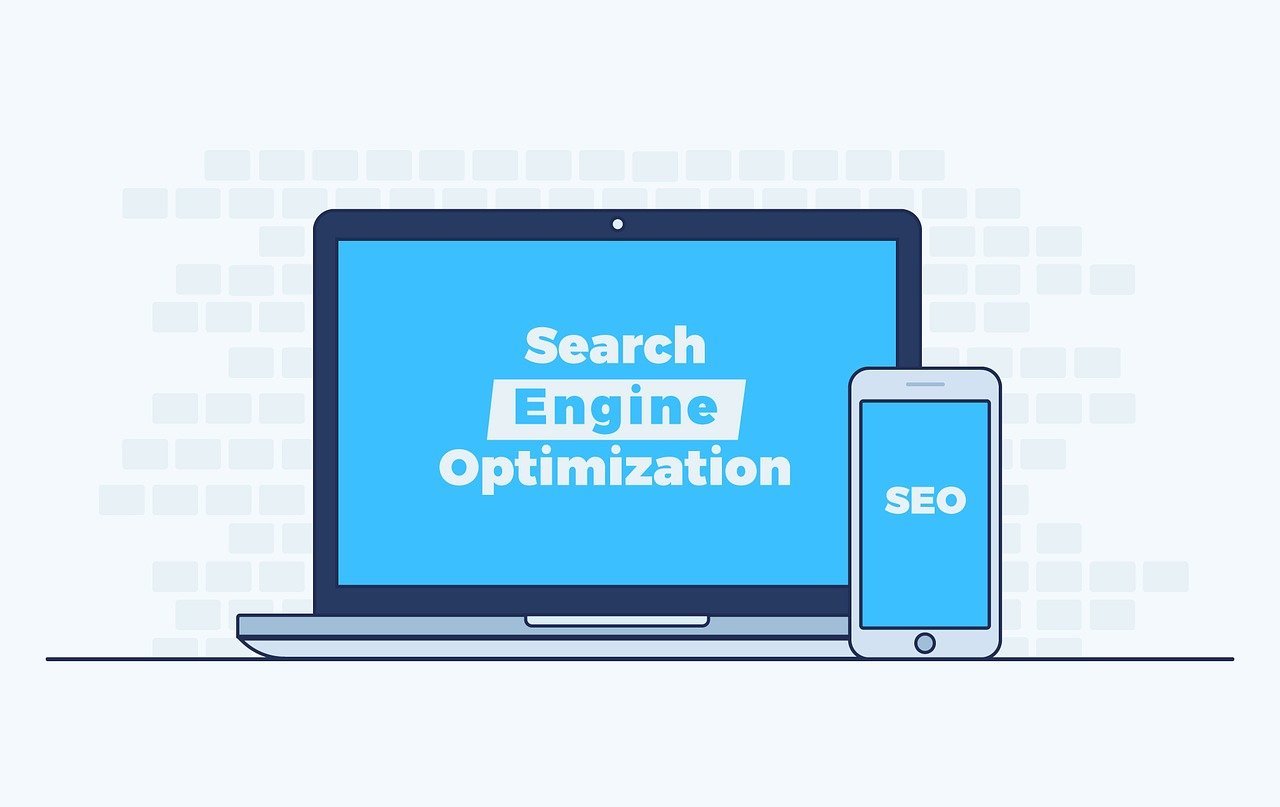Search engine optimization, also known as “SEO”, an abbreviation of the English “Search Engine Optimization” is a marketing method that aims to appear right up in the organic search results of search engines. When you talk about SEO, you often focus on Google as it is the search engine that is by far the biggest, but SEO as a marketing method applies to all search engines and not just Google.
As you probably know, the customer journey for many begins at Google. You might be looking for a product, a hotel, or something else. With this in mind, you naturally want your company to be highly visible and found by your target group. The old saying “if you can’t be seen, you don’t exist” applies quite well here.
That being said, SEO is an incredibly important marketing method for businesses and website owners to stand out in the competitive online world.
In this article, we will therefore delve deeper into SEO and discuss everything you need to know.
Basic Principles of SEO
First of all, let’s start looking at the basic principles of search engine optimization (SEO). SEO as a marketing method is quite broad and covers many different parts, although the common end goal is to appear in the search results. Here are some of the most essential pillars:
Keyword optimization
SEO starts with a careful analysis of relevant keywords. These are the words or phrases that people use when searching for information online. By strategically integrating these keywords into your site’s content, meta tags and other relevant places, it becomes possible for search engines to understand and rank your site for these search terms. You naturally want to focus on the keywords that are connected to your company and your products – and the keywords that your target audience uses to find them.
On-page and Off-page SEO
On-page SEO: This is all kinds of improvements and optimizations that you do on the website itself. It can be things such as the use of keywords in headings, meta descriptions, and the content of the page. It is also about optimizing the link structure, the content, and the URL structure for a better user experience and easier indexing by search engines.
Off-page SEO: Focuses on factors outside of the website itself that affect its ranking in search engines. Backlinks are a central part of off-page SEO, but other things such as social signals and online reputation also play a role.
Backlinks: A Cornerstone in SEO
Backlinks are links from other websites to your own. Backlinks are one of the most important ranking factors that Google and other search engines use when they decide how well they should rank a website in the search results.
One can describe backlinks as “votes” or endorsements that indicate a website is authoritative and valuable. The more votes, the better the site. But with that said, not all votes carry equal weight. A “vote” from a credible and well-known person (website) is more credible and therefore carries more weight than a “vote” from a completely unknown and newly started website, for example.
In short, search engines use backlinks as an indicator of website relevance and authority. The more high-quality and relevant backlinks a website has, the more trust it gets from search engines.
Here are some ways backlinks affect SEO:
Authority and Relevance: Backlinks act as a kind of voice on your website. The more and high-quality links you have from other authoritative websites in your subject area, the more authoritative and relevant your website is considered.
Increased Visibility: Search engines use backlinks as a signal of website popularity. A website with many relevant and authoritative backlinks has a better chance of ranking higher in search results, increasing its visibility.
Crawling and Indexing: Backlinks help search engines discover and index new pages on your website. When a search engine comes across a link to your site from another location, it will follow the link and index the linked page.
Types of Backlinks:
Natural Backlinks: These occur organically when other websites link to your content because they find it valuable or relevant.
Created Backlinks: Created on purpose, for example by buying links or links that are created yourself on different platforms etc.
Technical SEO
Technical SEO is a central part of search engine optimization and focuses on improving technical aspects of a website to make it more search engine friendly. Search engines use hundreds of different parameters in their algorithm to determine where a web page should be presented in the search results. Some of these include things like the speed of the website, whether it has a good structure, whether it uses titles, has relevant keywords, and more.
Technical SEO focuses on optimizing website structure to make it easier for search engines to understand, index and rank pages. Here follows a detailed explanation of various aspects of technical SEO:
Page Speed and Responsive Design
Page Speed: Search engines place a lot of importance on the speed of a website. A slow website hurts the user experience which is bad for search engines. Optimizing images, minimizing HTTP requests, and using cache are some strategies to improve page speed.
Responsive Design: Considering the increasing use of mobile devices, it is important to have a responsive design that adapts to different screen sizes. This is an important factor for both user experience and SEO.
Canonical Tags
Canonical tags are used to avoid duplicate content issues. By using canonical tags, website owners can specify the primary version of a page and avoid confusion for search engines about which version to index.
Structured Data and Rich Snippets
Structured Data: Implementation of structured data helps search engines understand the context of the content and provides the opportunity for so-called rich snippets. It may include reviews, ratings, pricing information, and more.
Rich Snippets: By using structured data, websites can better stand out in search results and attract users with more detailed information.
Optimized Titles and Meta Tags
Optimized Headings: The use of H1 to H6 headings not only helps users understand the structure of the page, but also provides search engines with important information about the page’s content.
Meta Titles and Meta Descriptions: Optimized meta titles and descriptions contain relevant keywords and provide a brief summary of the page’s content, which can increase click-through rates from search results pages.
Internal Link Structure
User-friendly URL structures: Creating user-friendly and readable URL structures is important to improve both user experience and search engine understanding of page content.
Strategic Internal Linking: The placement and anchor text of internal links affect how search engines evaluate page relevance and hierarchy.
URL Optimization
URL Structures: Optimize URLs to be clear and search engine friendly. Avoid unnecessary parameters and dynamic URLs that can make it difficult for search engines to index pages.
Canonical Tags: Use canonical tags to avoid problems with duplicate content and indicate which version of the page should be indexed.
Robot.txt and Sitemaps
robot.txt: This is the use of the robot.txt file to control which parts of the website should be indexed or not by search engines.
XML Sitemap: This is the creation of XML sitemaps to give search engines a structured overview of the website’s pages and help with faster indexing.
SSL security and HTTPS
SSL security: Security certificates and HTTPS protocols are important to secure the transfer of data between users and the website. This is not only a security measure but also affects search rankings.
Monitoring and Feedback
SEO Tools: Use tools such as Google Search Console, Ahrefs and SEMrush to monitor site performance, identify technical issues and gain insights into keywords and link structure.
On-page SEO
On-page SEO is about optimizing the individual pages of a website to improve its visibility and your ranking in search results. By focusing on specific elements and content on each page, you can create a search engine-friendly structure and provide users with relevant and useful content that leads to better search engine results. Here is a detailed explanation of various aspects of on-page SEO:
Structured Data and Rich Snippets
Structured data helps search engines understand the context of the content and allows for so-called rich snippets, such as reviews, ratings, and event information, which we discussed earlier
Structured data allows websites to stand out in search results and provide users with more detailed and relevant information directly in search results.
Optimized Titles and Meta tags
H1 to H6 headings: Structured and hierarchical headings is used to improve page structure and make content easy to read.
Meta-Titles and Meta-Descriptions: Optimized meta-titles and descriptions contain relevant keywords and provide a brief summary of the page’s content, which increases the click-through rate in search results.
Use of Keywords
Keyword Research: Conduct research to identify relevant keywords based on user search behavior.
Natural Keyword Placement: Integrating keywords in natural places in the content, headings, meta tags and captions. Be careful not to overdo it with too many keywords in an unnatural way. Many years ago, when search engine algorithms were not as advanced, you could do so-called “keyword stuffing” and fill a page with keywords and rank high in the results. Today, the algorithms are smarter and today, on the contrary, you can be penalized if you use too many keywords in an unnatural way. The focus must always be relevance and user experience.
Qualitative Content
Engaging and Valuable Content: The foundation of all successful SEO is high-quality and valuable content. Place a strong emphasis on creating high-quality content that is relevant and valuable to the target audience. This includes informative articles, guides, images and other types of media.
Readability: Optimizing for readability through the use of short paragraphs, bulleted lists and comprehensible writing style improves the user experience.
Images and Multimedia
Optimized Images: Use compressed and optimized images to reduce the loading speed of your website and improve the user experience. Avoid heavy files that take time to load.
Alternative Texts (ALT text): Always use alt text for your images to describe them and make it easier for search engines to understand the content.
Internal Link Structure
User-friendly URL structures: Creating user-friendly and search engine-friendly URL structures is important to improve user experience and search engine understanding of page content. You would rather have a URL that looks like this: Yoursite.com/webshop rather than “yoursite.com/shop-product-54329-2023
Strategic Internal Linking: Internal links are the links that lead users to different pages on your website. The placement and anchor text of internal links affect how search engines evaluate the relevance and hierarchy of the page.
Optimized Page Titles and Descriptions
Page Titles: Use unique and descriptive page titles for each page that include relevant keywords.
Meta descriptions: Short and informative meta descriptions that attract users and contain relevant keywords are important.
Usability and Page Layout
Responsive Design: Make sure your website has a responsive design to fit different screen sizes. Remember that the vast majority of people visit a website on mobile today and with that in mind it is important that your website is adapted for mobile and not just computers.
Clear Page Layout: An intuitive and clear page layout makes it easier for users to find relevant information.
Updated and relevant content
Updating Content: Be sure to regularly update your content to keep it relevant. You should also spend time constantly improving existing content to make it more valuable and useful.
Publication date: If possible, include publication dates on pages to show users that the content is current.
URL Optimization: Make sure to create readable and search engine-friendly URLs that clearly reflect the page’s content.
Content strategy
High-quality content is the basis of all successful SEO. Without high-quality and relevant content, there is no reason for search engines to present your website high in the search results.
Because of the importance of content, it is important that you establish a content strategy to create and manage content. A well-developed content strategy goes far beyond just producing texts and involves thoughtful planning to meet the demands of both users and search engines. Here is a detailed explanation of the different aspects of the content strategy:
Target audience analysis and creation of personas
Target audience analysis: Identification and understanding of the target group’s needs, preferences and behaviours.
Persona creation: Creation of fictional representations of ideal users to tailor content to their specific needs and interests.
Keyword research
Identifying Relevant Keywords: Research to identify the keywords and phrases that users are searching for within your industry or industry.
Long tail keywords: Exploration of long tail keywords to target specific and niche searches. For example, it is significantly easier to rank for the keyword “yellow shoes in Stockholm” than just “shoes” because the long-tail keyword is more specific.
Creation of Qualitative Content
Relevant and Valuable Content: Creating content that is relevant to the target audience and offers value. This can include articles, guides, videos, designs and other forms of media.
Evergreen Content: “Evergreen” means content with a long lifespan that does not quickly become outdated and irrelevant. It often pays more to create evergreen content that continues to perform year after year rather than news-focused content that becomes irrelevant after just a week.
Content Structure and Hierarchy
Structured Hierarchy: Organizing the content with a clear hierarchy and structure to facilitate navigation for both users and search engines.
Clear Headings and Subheadings: Use clear and informative headings and subheadings to break up the text and make the content easy to read.
Frequency
Posting Frequency: Scheduling regular posting to keep the target audience engaged and show search engines that the site is active.
Consistent Tone and Style: Maintaining a consistent tone and style to create a strong brand identity and increase user recognition.
Guest Post and Collaboration
Guest Posts: Collaborations with external authors or experts to create diverse and authoritative content.
Influencer collaborations: Partnerships with industry influencers to increase content credibility and reach.
Update and Optimization
Regular Update: Updating existing content to keep it relevant and current.
Keyword Optimization: Research of new keywords and optimization of existing content to improve visibility in search results.
Social Media Integration
Shareable Content: Creating content that is easy to share on social media to increase reach and engagement.
Social Media Campaigns: Using social media to promote content and interact with the target audience.
Measurement and Analysis
Measuring your results: Using analytics tools such as Google Analytics to measure and evaluate the performance and results of the content strategy.
Adjustment and Optimization: Based on the analyses, adjustment of the strategy to improve results and reach set goals.
User Interaction and Feedback
Comments and Discussion: Encourage user interaction through comment sections and forums to make your visitors and fans more involved and engaged.
User feedback: Collecting feedback from users to understand their needs and make necessary improvements.
Mobile SEO
Mobile SEO or search engine optimization for mobile devices is a strategy that focuses on making websites user-friendly and perform well on smartphones and other mobile devices. As mentioned earlier, a majority of users visit websites using their smartphone and with this in mind, it is crucial to ensure websites are optimized for these devices to improve user experience and meet search engine requirements. Here is a detailed explanation of various aspects of Mobile SEO:
Responsive Design
Responsive Layout: Implementation of responsive design that allows the website layout to automatically adapt to different screen sizes and devices.
Device Compatibility: Ensuring that website content and features work seamlessly on different mobile devices.
Fast Page Speeds
Image Optimization: Compression of images and multimedia elements to reduce page speed and improve performance on mobile networks.
Minimizing HTTP requests: Reduce the number of HTTP requests by combining files and using resources that are minified for faster loading.
Mobile Friendly Pages
Touchscreen adaptation: Optimizing navigation and interaction elements to fit touchscreens and mobile user behaviors.
Readable Content: Use of readable text size and contrast to improve readability on smaller screens.
Mobile-friendly Test and Validation
Google’s Mobile-Friendly Test: Use Google’s Mobile-Friendly test to test whether a website meets Google’s mobile-friendly requirements and provide suggestions for improvements.
Testing on Different Devices: Testing the website’s performance and appearance on different mobile devices to ensure a consistent experience.
Mobile Optimized Local Pages
Local Adaptations: If your site has a local presence, it can be helpful to ensure that local pages are optimized for mobile users including having clear contact details and easy directions.
Google My Business Optimization: Optimization of Google My Business profiles to improve visibility in local search results on mobile devices.
Accelerated Mobile Pages (AMP)
AMP implementation: Using Google’s “AMP” (accelerated mobile pages) can create lightning-fast pages for mobile users that load faster.
Critical Content Prioritization: AMP files prioritize the loading of critical content to improve loading speed on mobile devices.
Structured Data for Mobile Users
Schema Markup: Implementation of schema markup to provide detailed and structured information about website content, which can be displayed on mobile screens as rich snippets.
FAQ and How-to schema: Using specific schema types, such as FAQ and How-to, to increase visibility in mobile search results.
Location and GPS optimization
GPS Integration: If relevant to your site, integrating GPS features and maps can help facilitate location and navigation on mobile devices.
Local Search Engine Optimization: Use of mobile-friendly keywords and Local SEO optimization to attract mobile users in specific geographic areas.
App Integration and Optimization
Deep Linking: Implementing deep links that enable a seamless transition between the website and your mobile app (if you have one).
App page optimization: If the website has an associated mobile app, app page optimization can help improve the user experience.
Monitoring and Analysis
Mobile Analytics Tools: Use of mobile analytics tools to monitor performance, user behavior and errors on mobile devices.
Reporting and Actions: Regular reporting and appropriate actions based on analytics to optimize the site’s mobile performance.
SEO analysis and Reporting
SEO analysis and reporting is an area that is often forgotten in SEO work. It is of course important to analyze and evaluate your SEO results so that you can see what works well and what works less well. This way, you can make the necessary adjustments to improve performance and visibility in search engine results. This process involves monitoring various key indicators and using various tools to analyze and interpret the data. Here is a detailed explanation of the different steps in SEO analysis and reporting:
Google Analytics and Google Search Console
Data Collection: Implementation of Google Analytics and Google Search Console to collect comprehensive data about website performance, including traffic sources, keywords, user behavior and technical issues.
Goals and Conversions: Establishing and tracking goals and conversions to measure how well the website is meeting its goals.
Search Efficiency and Search Analysis
Ranking Reports: Using tools like Ahrefs or SEMrush to generate reports and track your site’s position in search results for different keywords over time.
Search Analytics: Analysis of keyword trends and changes in search volume to identify new opportunities and optimize existing content.
Competitive analysis
Competitor Monitoring: Examining competitors’ SEO strategies, keyword choices and performance to identify areas for improvement and differentiation.
Backlink Analysis: Reviewing competitors’ backlink profiles to find potential link opportunities and understand their external SEO tactics.
User Experience and Site Performance
Page Speed and Load Times: Using tools like PageSpeed Insights to measure page speed and identify possible improvements.
User Experience: Evaluation of the website’s user experience by analyzing page structure, navigation and user behavior.
Click Through Rate (CTR) and Conversions
Click-through rate analysis: Evaluating click-through rates from search engine results to understand how enticing page titles and meta descriptions are. By evaluating this, you can make changes to increase the click-through rate your pages receive in search results. This way you don’t necessarily have to rank higher but can get more visitors by getting users to actually click on your search result. However, the search engines will also reward you with higher rankings if it turns out that users prefer to click on your page over others.
Conversion Analysis: Analysis of the website’s conversion process to identify potential bottlenecks and optimize conversion streams.
Backlink Profile and Quality
Backlink Analysis Tools: Using tools like Ahrefs or Moz to monitor and analyze the website’s backlink profile.
Quality Assessment: Evaluation of backlink quality and relevance to ensure a healthy and authoritative backlink profile.
Content Analysis and Optimization
Content Performance: Analysis of how different types of content perform in terms of user interaction and visibility in search results.
Keyword Analysis: Recurring keyword analysis to identify new opportunities and optimize existing content.
Technical SEO audit
Sitemap and Robot.txt: Evaluation of the website’s XML sitemap and robot.txt file to ensure that search engines can index the pages correctly.
Canonical Tags and URL Structures: Review of the use of canonical tags and URL structures to avoid duplicate content and improve usability.







![76 Tips to Optimize your Website for SEO [Guide]](https://toppdomain.com/wp-content/uploads/2023/12/web-3967926_1280.jpg)